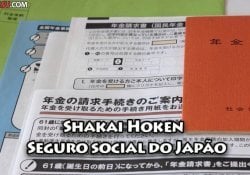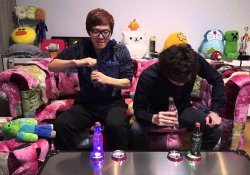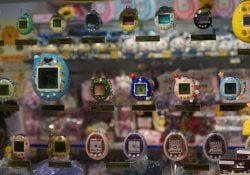Unlike us, the Japanese use an extension after the number to indicate that they are counting something. The problem is that beginners can end up getting lost, because in addition to recording the numbers, they must remember many counting indicators, and know the right moment to use them.
In this article, we are going to talk about the indicators or counters used as suffix or prefix of numbers to indicate certain item in Japanese language.
Índice de Conteúdo
How Japanese Numerical Counting Works
This article will not teach the Japanese numbers. When we talk about counting, we are referring to counting objects that in Japanese always merge the number with a certain ideogram that represents a certain object.
For example, I want to indicate that there are 5 people. I just talk gonin [五人] which is the junction of the number 5 + the person ideogram person [人]. This does not only happen with numbers, as an example we have burajirujin [ブラジル人] which means Brazilian.
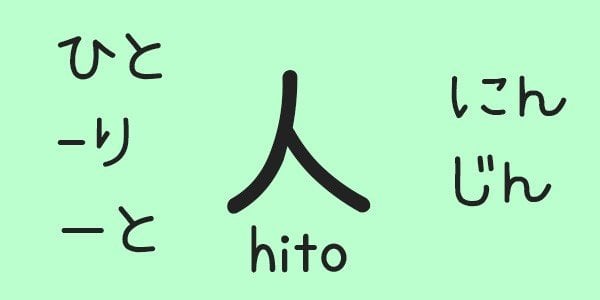
Most of the time, the ideogram or kanji that will represent the counting object will have its Chinese pronunciation. ON. Apart from these details, there are 3 difficulties:
- The pronunciation of the counter changes depending on the number. Example: [匹] can be Hiki or Biki;
- The pronunciation of the number changes depending on the counter. Example: One and Two flips hitori and futari along with kanji [人];
- You have to analyze and remember which object or thing uses such a form or count indication;
It may seem complicated, but with time you get used to it. There are no differences between Japanese words that use ideograms and these counting forms.
To help, we will leave at the end a table explaining the euphonic changes in counts. That way you can carefully examine the counts and then know the right way to use them.
Accountants in Japanese
First we will leave a table with the top 8 counters, then another table with most of the counters. If you have doubts, know that it's simple. Just say the number and then the counter.
If you want to say: "There are 5 people", you say: Go Bod Imasu. Seeing the table below you will understand better.
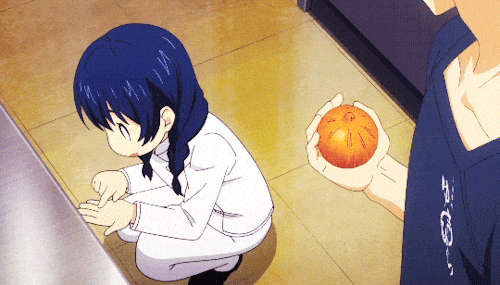
If you're new to Japanese, we recommend not going past the top 8 ways to count, so you don't end up losing your mind. But you can take a look, it's just not necessary to learn all of them at this point. But see the end of the article which shows very important things.
Responsive Table: Scroll the table sideways with your finger >>
| Category | Accountant | Description | |
| Human | NIN | 人 | It serves to count people, human beings. |
| Cheered up | HIKI; PIKI; BIKI | 匹 | It is a counter related to small animals such as fish, cat, mouse and many others. |
| General | TSU | つ | With tsu you can count most things and objects not corresponding to other categories. |
| Inanimate | KO | 個 | For small or compact, usually rounded, lifeless objects, we can count apples, oranges, lemons, rocks, croquettes, and the like. |
| Big, electric goals | DAI | 台 | For large objects such as cars, wardrobes, cupboards, it includes counting all types of household appliances such as refrigerators, computers and telephones, etc. |
| Fine Objects | HON; PON; BON | 本 | Widely used to count thin and elongated objects such as pencils, pens, trees, etc. The most curious thing about this counter was to realize that it was also used to count video tapes and telephone calls. |
| Printed material | SATSU | 冊 | It is a counter used for practically all types of printed material such as books, magazines, pamphlets, handouts, etc. |
| Fine Objects | MAY | 枚 | For the Japanese, fine objects are things like shirts, sheets of paper, plates, cookies, blankets. |
Common people and things counters
Responsive Table: Scroll the table sideways with your finger >>
| Pronunciation | Kanji | Information |
| boo | 部 | Copies of a magazine or newspaper, or other packages of papers |
| hai;dad;bai | 杯 | Drinking cups and glasses, cuttlefish, octopus, crabs, squid and boats. |
| kai; gai | 階 | To count floors and floors. |
| ok | 個箇个ヶ | Word for general counting, used when there is no specific counter. Implies that the item is small or round.個 is also used for military units. |
| mei | 名 | Polite people () (名 means "name") |
| men | 面 | Mirrors, board game boards (chess, igo, shogi), computer game stages, walls of a room, tennis courts |
| wow | 話 | Stories, episodes of TV series, anime and etc. |
The article is still halfway through, but we recommend also reading:
Time, calendar and attendance counters
Responsive Table: Scroll the table sideways with your finger >>
| Pronunciation | Kanji | Use |
| Byo | 秒 | seconds |
| divertido; trocadilho | 分 | minutes |
| 月; 月 | 月 | Months of the year. |
| haku; paku | 泊 | Number of nights. |
| ji | 時 | Times of Day |
| jikan | 時間 | Long period of hours / Time |
| ok | 日 | Day of month |
| kagetsu | ヶ月; 箇月 | Long period of months. |
| not applicable | 年 | Years, years of school (degrees). Do not use for years old. |
| untranslatable | 日 | Days of the month (There are exceptions) |
| leaves | 歳; 才 | Years of age (才 is used informally as an abbreviated form) |
| Shuu | 週 | weeks |
| bai | 倍 | multiples, sometimes, several times. |
| ban | 番 | Position. In sports games. |
| do; tabi Translation: do; tabi | 度 | Occurrences, number of times, degrees of temperature or angle. |
| jou | 畳 | Used to count tatami, this kanji also means tatami. |
| kai | 回 | Occurrences, number of times |
Other Unknown Accountants
Remembering that such terms are unknown and rarely used, and there is probably a more correct way of saying such a thing.
Responsive Table: Scroll the table sideways with your finger >>
| Pronunciation | Japanese | Use |
| ba | 場 | Scene from a game |
| bai | 倍 | To count multiple things, multiple things |
| ban | 晩 | count nights |
| ban | 番 | Position, platform for a train line, and sports games. |
| bi | 尾 | Small fish and shrimp (used in the fish trade.) |
| boo | 部 | Copies of a magazine or newspaper, or other packages of papers. |
| bun | 文 | sentences |
| byōshi | 拍子 | Musicals and beats |
| chaku | 着 | Clothing suits. |
| choo | 挺 | Weapons, knives, tools, instruments, violins |
| choo | 丁 | Tools, scissors, saws, pants, guns, tofu buns, servings in a restaurant. |
| choo | 町 | City blocks/blocks |
| dai | 代 | Generations, historical periods, kingdoms |
| dan | 段 | levels, degrees, steps (stairs). |
| danraku | 段落 | paragraphs |
| fuck | 筆 | Sequences of letters or drawings that you write or draw without removing pen from paper. |
| fuku; puku | 服 | powdered green tea, packets or doses of powdered medicine, puffs (eg a cigarette) the like. |
| fuku; puku | 幅 | hanging scrolls (Kakejiku) |
| fury | 振 | swords |
| gakkyū | 学 級 | Classes (in pre-university education) |
| ir | 語 | Words |
| gon; koto | 言 | Words |
| gu | 具 | Furniture sets. Suits and some rare clothes. |
| gyo | 行 | lines of text |
| haku | 泊 | Nights |
| hey | 敗 | Losses (sport attacks) |
| hako | 箱 | Boxes |
| hari | 張 | Umbrellas, tents |
| hashira | 柱 | gods and tombstones |
| First; Second | 発 | Shots, bullets, fireworks in the sky; orgasms, sexual acts |
| hin; pin | 品 | Parts of a meal, courses. |
| hitsu; pitsu | 筆 | Pieces of land, lots and land. |
| ho; po | 歩 | Number of steps (foot) |
| untranslatable | 票 | Wishes |
| ji | 字 | Letters, kanji, kana |
| ji | 児 | Children. Like: "father of two" |
| jō | 錠 | Pills / Capsules |
| jō | 条 | Articles of law, fine objects, rays or currents of light, smoke or lightning. |
| ok | 架 | Frames |
| ok | 課 | lessons |
| kabu | 株 | forest nurseries |
| kai | 回 | Occurrences, number of times (see also: do) |
| kai; gai | 階 | number of floors |
| kakoku | ヶ国 | countries |
| kakokugo | ヶ国語 | languages (national) |
| kaku | 画 | strokes in kanji |
| kan | 貫 | pieces of nigiri-zushi |
| kan | 艦 | Warships |
| keitou | 系統 | Bus lines |
| ken | 件 | Abstract questions and cases |
| ken; gen untranslatable | 軒 | housing |
| ki | 機 | aircraft, machines |
| ki | 基 | Graves, Wreaths, CPUs, Reactors, Elevators, Dams |
| kin | 斤 | Breads |
| kire | 切 れ | Slices (bread, cake, sashimi, etc.) |
| ok | 戸 | Houses (戸 means "door") |
| kō | 校 | Schools |
| kō | 稿 | Drafts of a manuscript |
| kō | 行 | banks |
| koma | 齣 | Frames, panels. |
| kon | 献 | shots (drinking) |
| ku | 区 | Sections, city districts |
| ku | 句 | Haiku and Senryu |
| mouth | 口 | (Bank) Bills, Donations (口 means "opening" or "input") |
| kumi | 組 | Groups, a couple of people (twins, a husband and wife, dancers, etc.) |
| kurasu | クラス | school classes |
| kyaku | 脚 | Tables, chairs, long-stemmed cups |
| kyaku | 客 | Cup and saucer pairs |
| kyoku | 曲 | music pieces |
| kyoku | 局 | Board games (chess, go, shogi, mahjong); radio stations, television channels |
| maki; kan | 巻 | Scrolls, book volumes |
| maku | 幕 | plays |
| mon | 門 | cannons |
| mon | 問 | Questions |
| ninmae | 人前 | food portions |
| ori | 折 | Folded paper boxes |
| peji | ページ; 頁 | Pages |
| king | 例 | cases, examples |
| king | 礼 | Arches in a shrine |
| rin | 輪 | wheel, flowers |
| ryō | 両 | rail cars |
| sao | 棹 | amenities, flags |
| sha | 社 | Used for companies i.e. 会社 |
| seasons | 式 | Sets of things, such as documents or furniture |
| shō | 勝 | Wins (In Sports) |
| shu | 首 | Tanka / Waka - Japanese Poems |
| shū | 週 | weeks |
| shuruiou; shu | 種類種 | type, species |
| soku | 足 | Pairs of shoes and pairs of socks |
| tab | 束 | Groups of flowers and vegetables |
| tai | 体 | Images, statues, remains of the person, dolls |
| tawara | 俵 | rice bags |
| teki | 滴 | drops of liquid |
| dez | 点 | Points, pieces of a set |
| I'm | 頭 | Large animals, cattle, elephants, whales, dolphins, butterflies (頭 means "head") |
| Hello | 時 | Periods of time, or one-sixth of the day or night. |
| Tori | 通 り | combinations |
| Tsu | 通 | Letters |
| tsubo | 坪 | Commonly used area unit. Example: 3.3 square meters. |
| tsubu | 粒 | almonds, grains |
| tsūwa | 通話 | The phone calls |
| wa; ba; pa | 羽 | Birds, rabbits 羽 means "feather" or "wing". |
| wow | 把 | packages |
| wow | 話 | Stories, TV series episodes, etc. |
| yes | 夜 | Nights |
| zen | 膳 | Pairs of chopsticks/rice bowls |
Euphonic Changes and Exceptions
Euphonic changes occur when certain numbers end with counters that start with certain phonemes. For example:
- One + time → One time;
- 六 roku + 匹 hiki →六匹 roppiki;
Details are listed in the following table:
Responsive Table: Scroll the table sideways with your finger >>
| Numeral | K | I'm not sure what you're referring to with "S / SH." Could you please provide more context or specify the text you'd like translated? | T / CH | H | F | P | W |
| 1 - one | Ikk | iss [いっさ] | itt [いった] | ipp [いっぱ] | Ipp | ipp [いっぱ] | |
| 3 health | sanb [さんば] | sanp [さんぷ] | sanb [さんば] | ||||
| 4 years old | yonh [よんは] | yonf [よんふ] | yow [よわ] | ||||
| 4 years old | yonp [よんぱ] | yonp [よんぷ] | yonw [よんわ] yonb よんば] | ||||
| 6 roku | rokk [ろっか] | ropp [ろっぱ] | ropp | ropp [ろっぱ] | These seem to be words written in Japanese script (hiragana). As they are, I cannot provide a meaningful translation since they don't correspond to any specific context. If you need a translation or further assistance, please provide additional details or context for these words. | ||
| 8 hachi | hakk [はっか] | hass [はっさ] | hatt [はった] | happ [はっぱ] | happ [はっぷ] | happ [はっぱ] | happ [はっぱ] hachiw [はちわ] |
| 10 juu | jikk [じっか] | jiss [じっさ] | jitt [じった] | jipp [じっぱ] | jipp [じっぷ] | jipp [じっぱ] | jipp [じっぱ] |
| 10 am | jukk [じゅっか] | juss | jutt | jupp [じゅっぱ] | jupp [じゅっぷ] | jupp [じゅっぱ] | |
| 100 hyaku | hyakk [ひゃっか] | hyapp [ひゃっぱ] | hyapp [ひゃっぷ] | hyapp [ひゃっぱ] | |||
| 1000 sin | senb [せんば] | senp [せんぷ] | |||||
| 10000 man | manb [まんば] | manp [まんぷ] | |||||
| 何 nan | nanb [なんば] | nanp [なんぷ] |
There are some Exceptions in the counts, see a table below, showing which numbers are different, when pronouncing in a certain counter.
| Numeral | 日 untranslatable | 人 nin | 月 gatsu | 時 ji | 時間 jikan | 階 kai | 百 hyaku | 千 without | 歳 leaves |
|---|---|---|---|---|---|---|---|---|---|
| 1 | tsuitachi | hitori | issen | ||||||
| 2 | futsuka | futari | |||||||
| 3 | mikka | sangai | sanbyaku | sanzen | |||||
| 4 | yokka | yonin | shigatsu | yoji | yojikan | ||||
| 5 | itsuka | ||||||||
| 6 | muika | roppyaku | |||||||
| 7 | nanoka | shichinin | shichigatsu | shichiji | shichijikan | ||||
| 8 | yōka | happyaku | hassen | ||||||
| 9 | kokonoka | kugatsu | kuji | kujikan | |||||
| 10 | tōka | ||||||||
| 14 | jūyokka | jūyonin | jūyojikan | ||||||
| 20 | hatsuka | hatachi | |||||||
| 24 | nijūyokka | 24 people | 24 hours | ||||||
| 何 nan | ** | nangai | nanzen |
That was just the basics, there are a lot of other details that we left out or didn't explain well. I hope you understood this article a little.

